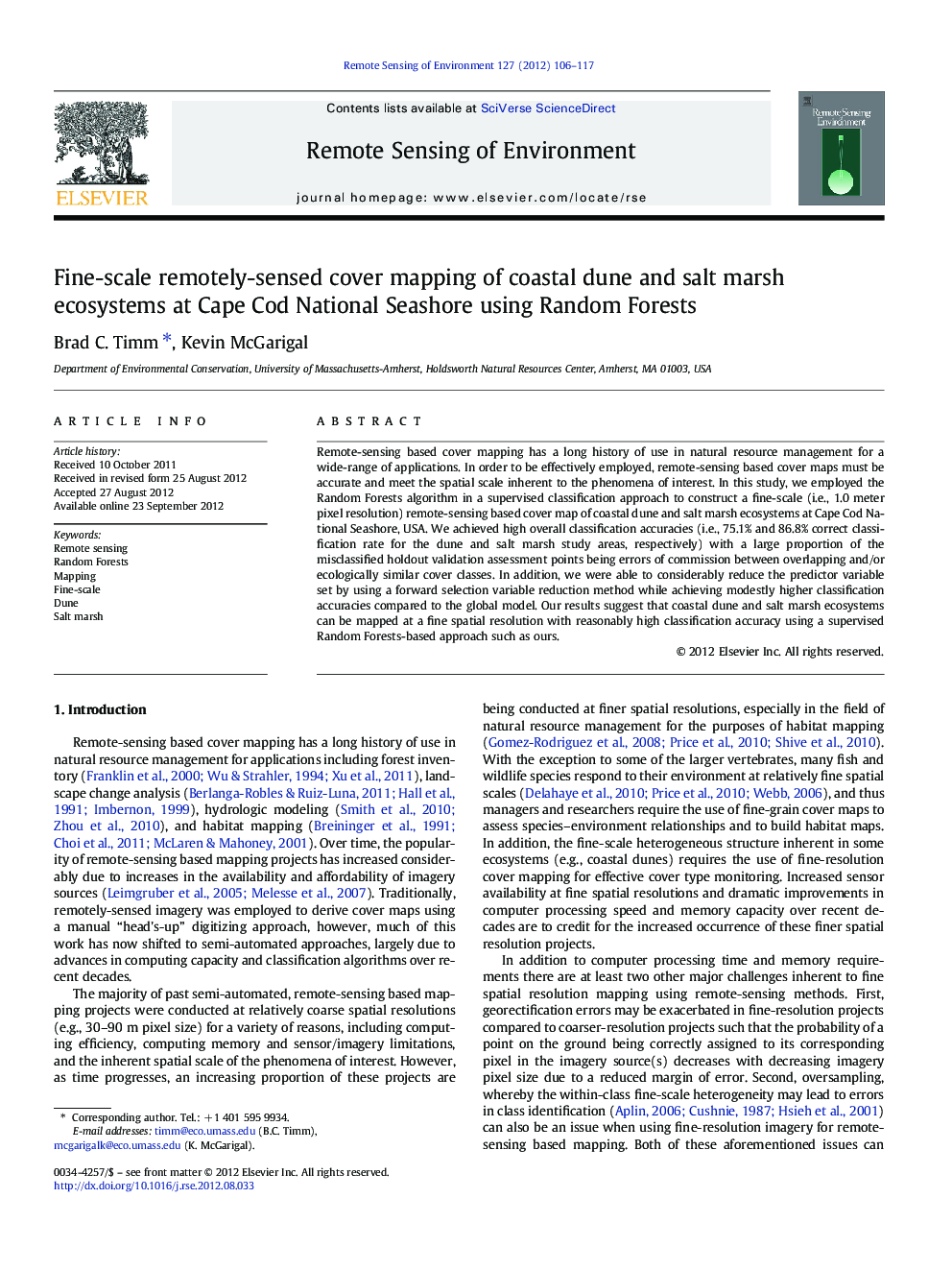| Article ID | Journal | Published Year | Pages | File Type |
|---|---|---|---|---|
| 4459090 | Remote Sensing of Environment | 2012 | 12 Pages |
Remote-sensing based cover mapping has a long history of use in natural resource management for a wide-range of applications. In order to be effectively employed, remote-sensing based cover maps must be accurate and meet the spatial scale inherent to the phenomena of interest. In this study, we employed the Random Forests algorithm in a supervised classification approach to construct a fine-scale (i.e., 1.0 meter pixel resolution) remote-sensing based cover map of coastal dune and salt marsh ecosystems at Cape Cod National Seashore, USA. We achieved high overall classification accuracies (i.e., 75.1% and 86.8% correct classification rate for the dune and salt marsh study areas, respectively) with a large proportion of the misclassified holdout validation assessment points being errors of commission between overlapping and/or ecologically similar cover classes. In addition, we were able to considerably reduce the predictor variable set by using a forward selection variable reduction method while achieving modestly higher classification accuracies compared to the global model. Our results suggest that coastal dune and salt marsh ecosystems can be mapped at a fine spatial resolution with reasonably high classification accuracy using a supervised Random Forests-based approach such as ours.
